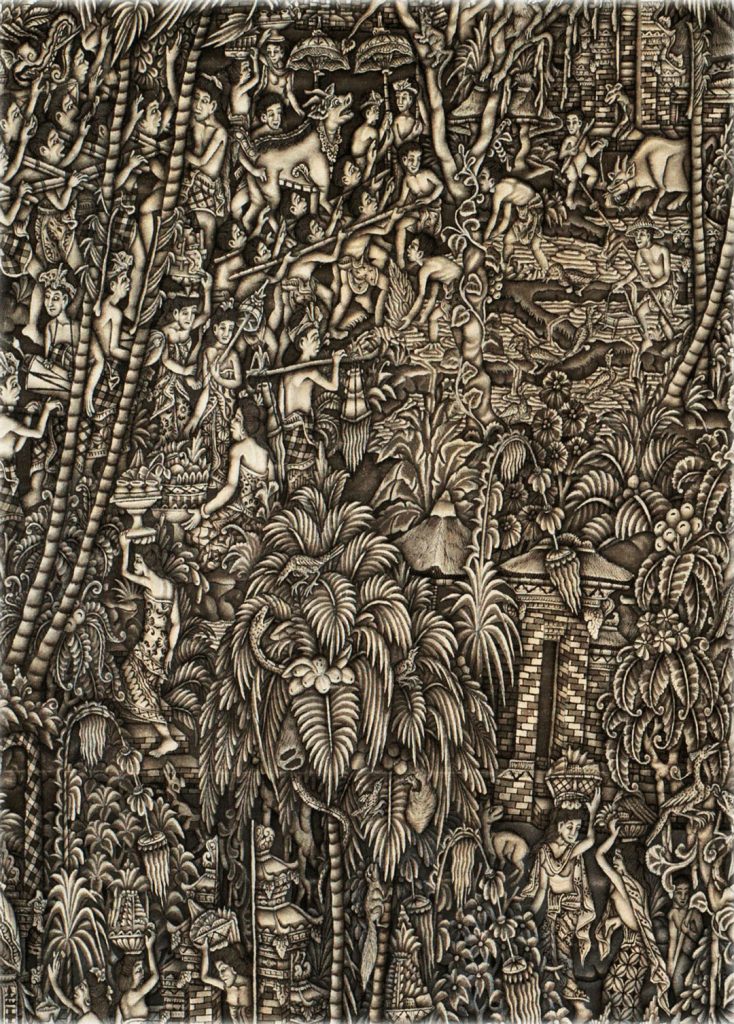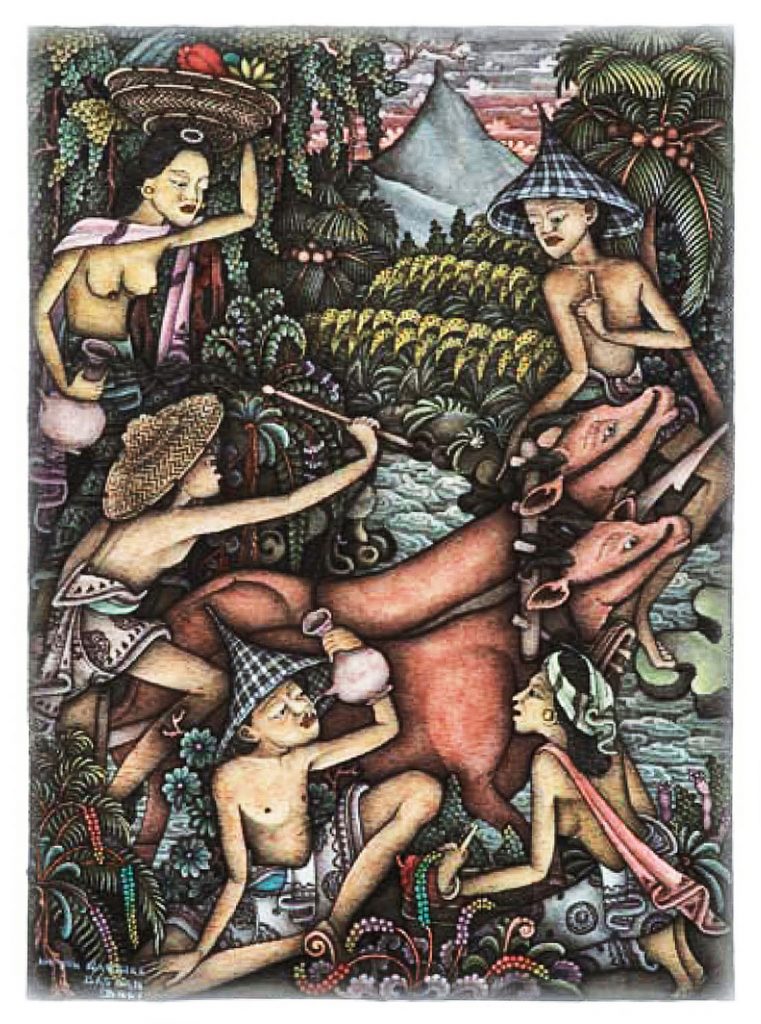The area located within the walls of the family compounds or village temples was familiar territory, not necessarily always peaceful or benevolent, but always comprehensible and manageable.

by I Dewa Kompiang Pasek Malen in collabration with Dewa Made Latra
117cm x 197cm Canvas 1970’s
Many paintings portray the different stages of an individual’s life, from birth to death. There are scenes of commonplace activities, portrayals of incidents and accidents, depictions of crimes and the resolution of crimes. The market is a popular setting, it is a society unto itself with its own social structures and cast of characters. There are village wide activities, some just for entertainment, but mostly to support the ritual life of the village, portrayals of music, dance, the ceremonies and their offerings. Many versions of activities just outside the village boundary are shown, tilling fields with water buffalo, working in vegetable gardens, fishing in rivers and ponds. Returning to the village after a days work is a favorite theme.

26cm x 19cm Paper 2000
A grand over-view of daily life in the village offers a lot of material for the artists to work with. and the resulting compositions are usually large and complex. Each artist has their own particular way of approaching this aesthetic challenge, we will look at five examples.
Looking closely at this incredibly detailed and carefully organized design of this painting reveals that it features one particular ceremony. There is a cremation ceremony shown at the bottom, but this painting can be more clearly understood as an overall view of village life. There are three main centers of activity; the people carrying the tower, the people praying, and the men holding a ritual cockfight. But these are interwoven with the other figures shown engaged in more mundane activities, none of these scenarios predominate, nothing stands out above the rest.
This painting was created by one of the original group of Batuan painters later in his life, in collaboration with one of his sons.









